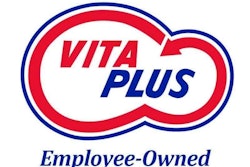
Keeping things simple is the hallmark of a successful grain merchandiser.
This article was recently uncovered in our company archives and, although it was penned 44 years ago, it could easily have been written with this past year in mind. It seems the more things change, the more things stay the same.
This article was originally written by Don White and
Granville Tilghmadn for Grain Age magazine's August 1977 issue.
This may not be the year to write on the virtues of hedging, especially where soybeans are concerned. The 1976-77 soybean market has been one of dramatic and tumultuous rise that has seen flat pricers carrying their beans on open positions reap tremendous profits while hedgers have watched enviously and possibly even questioned their own strategies.
Yet as this is being written, the market has experienced a precipitous drop of over $3 per bushel, leaving flat pricers who have overstayed their play in the familiar position of sweating out a rally.
Is the market always right?
It has been said that the market is always right. This is, probably, true. In the final result, the forces of supply & demand will cross and fix in a position of equipoise. The emotional reactions the market will go through on its path to balance are something else again.
This is true of any market seeking to bring itself into balance and seems to magnify itself several times over in soybeans.
There are few commodity markets with volatility that provide the excitement, beauty, and terror found in the soybean pit. It is an arena of action that draws the speculator much as the proverbial moth is drawn to the flame.
This is good. It provides the speculator with what he apparently is seeking-large opportunities and risks and, above all, thrills. It maintains interest in this most-important oilseed. The speculators are there to assume the risk away from the industry and to allow it to perform its function of supplying the world with foodstuffs it requires at reasonable profits.
Unfortunately, the same allure that attracts the speculator often will hypnotize the elevator operator who might run intelligent, safe, fully hedged operations in corn and other grains.
Watch out for windfalls
The prospect of windfall profits will cause him to fall prey to taking a speculative position on soybeans or other grains and to leave all or part of his purchases unhedged, or to tamper with them after they are placed (removing them to try to catch a rise in the market hoping to replace the hedges in anticipation of a decline).
They often are encouraged to do this by their commodity broker, who publishes research market overviews and what he calls "hedging strategies." The brokers, of course, have a vested interest in this type of operation in that the greater number of times that they can trade the same grain, the higher their earnings from commissions will be.
Tampering with hedges is not only true on the country elevator level; only recently, one of the largest national grain companies announced a quarterly loss of 60 million dollars together with the resignation of the vice president in charge of its commodities desk.
The dealers with hedge programs who make a practice of selecting a percentage of their inventories to leave open or unhedged or who lift their hedges when there is the prospect of a rise in the market, planning to replace them in anticipation of a fall, are running speculative programs.
The decisions as to what percentage to leave open or when to lift the hedges and replace them are speculative decisions. These dealers truthfully cannot call their programs "hedge programs," but rather the practice of hedging partially or sometimes becomes an instrument in a speculative program.
Three keys to a successful hedged marketing program
This type of program cannot satisfy what most hedgers consider to be the three greatest advantages of having a hedged marketing program, those of risk transfer, financing and management time.
1. Risk Transfer - The greatest single advantage of a hedge program is to be able to transfer the risk involved in the ownership of a price volatile commodity such as wheat, corn, and soybeans to others. If a dealer who purchases a quantity of cash grain or soybeans simultaneously sells an equal amount of futures, he will find that he is insulated from loss due to large swings in price resulting from real or emotional reactions to national or international news.
So long as his knowledge of his local basis patterns is complete, his profits are predictable. Hedging must be done with the full realization and acceptance of the fact that in transferring the risk of loss due to drop in price, the elevator operator also is transferring the opportunity for windfall profits. It is this opportunity for large profits that attracts the speculator to the market and allows him to play his role of accepting the risk of devastating loss.
A partial hedger, one who hedges a percentage of his inventory, is making only partial transfer of the risk. The grain dealer who tampers with his hedges once they are in position is allowing the risk to be transferred back to him and trusting in the infallibility of his decisions as to when to lift his hedges and when to replace them.
There are others interested in the dealer's business besides himself. They are his farmer customers who are depending on him to provide a good, safe market for their crops and his banker, who easily could have loans outstanding to him that greatly exceed his net worth. They are relying on the dealer to conduct his business in as prudent a manner as possible and to institute as many safeguards as can be implemented.
2. Financing - The value of a well-thought-out, disciplined hedging program cannot be underestimated by an elevator operator or by the hanker who finances him.
The financing of grain inventories at today's prices requires lines of credit that reach far beyond the working capital of most elevators. Without an adequate line of credit, an elevator operator cannot hope to perform his main functions - those of providing a good market and liquidity for his farmer customers and assembling the grain in his community and transferring it through time and distance in the quantities and qualities required by the market.
No knowledgeable banker is going to commit the funds of his bank to finance an inventory that often will exceed the net worth of the business he is financing without assurance that the worth of this inventory is going to be preserved.
There are three ways that the value of a grain inventory can be eroded:
- The inventory or parts of it can disappear.
- The grain can be allowed to go out of condition and deteriorate in grade.
- Lastly and most likely, the market can decline.
The first two of these possibilities easily are resolved by the banker's knowledge of and confidence in his customer. This can be reinforced through the employment of an inspection service either from within the bank or a private, state, or federal warehouse service. The third possibility that the inventory could lose value through market decline is the most probable.
It requires little imagination on the part of the banker to visualize 100,000 bushels of soybeans purchased for $9 and financed at 90 per cent with the bank holding a note for $810,000 declining to $7 for a total value of $700,000. If the banker has no knowledge of the grain trade and no inclination to learn, he prudently must back away. On the other hand, a knowledgeable banker realizes that the only sure way to preserve the intrinsic worth of the commodity he is financing is to require of his customer a fully hedged program.
3. Management Time - Not all of the returns to management from running a fully hedged marketing program can be computed with a simple "net purchases deducted from net sales" formula.
While being difficult to quantify, they nonetheless will have a real impact on the bottom-line performance of the elevator. The most important of these is management time.
How to be a wise manager
Most country elevator operators wear many management hats -- those of chief executive officer, financial officer, personnel director, traffic manager, customer relations man, merchandiser, plant engineer, and others. Unless a grain dealer is truly extraordinary, he simply does not have time to add "successful speculator" to these.
Yet in order to hedge partially or to lift and replace hedges, he must accept the responsibility for monitoring supply and demand information outside of his local area to determine how much and when to expose his inventory.
Rather, a wise manager will realize that a sound hedged marketing program can be set up to lift some of his responsibilities and leave him free to manage those things over which he can exercise some control. The program will allow the manager to formulate a flexible but quiet, refined marketing program before harvest is upon him.
He can make forward sales to take care of excess volume; set spreads to lock in carrying charges for grain that he intends to store; can balance workloads, recognizing and minimizing his weaknesses while maximizing his strengths.
Finally, there is the aspect of leverage to consider. An elevator operator who purchases a tank of unhedged grain or soybeans is not making a smart speculation. He has placed his money in a physical commodity on which interest must be paid, which must be insured, and which must be cared for.
Any grain will shrink in volume over time. Had he speculated in futures with the same amount of money, he could have owned several times the equivalent number of bushels in futures contracts.
Not only would he not have to bear the costs of owning cash grain, but the leverage of the futures contracts would allow him to feel the impact of more profit or loss per dollar invested.
An analysis over the long run cannot help but reassure the operator with a fully hedged program that he is doing the proper thing. He has been taking good profits year after year while performing the service for which his business was intended.
The dealer is doing this safely, which must be good for his own health and wellbeing at the same time.
White Commercial Corp. is a commodity futures broker that works with local agribusinesses whose job it is to collect and redistribute grain in communities around the country.

















